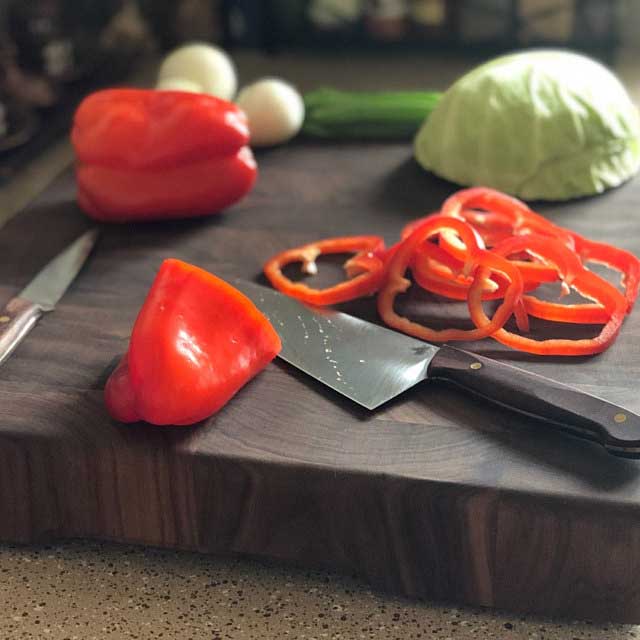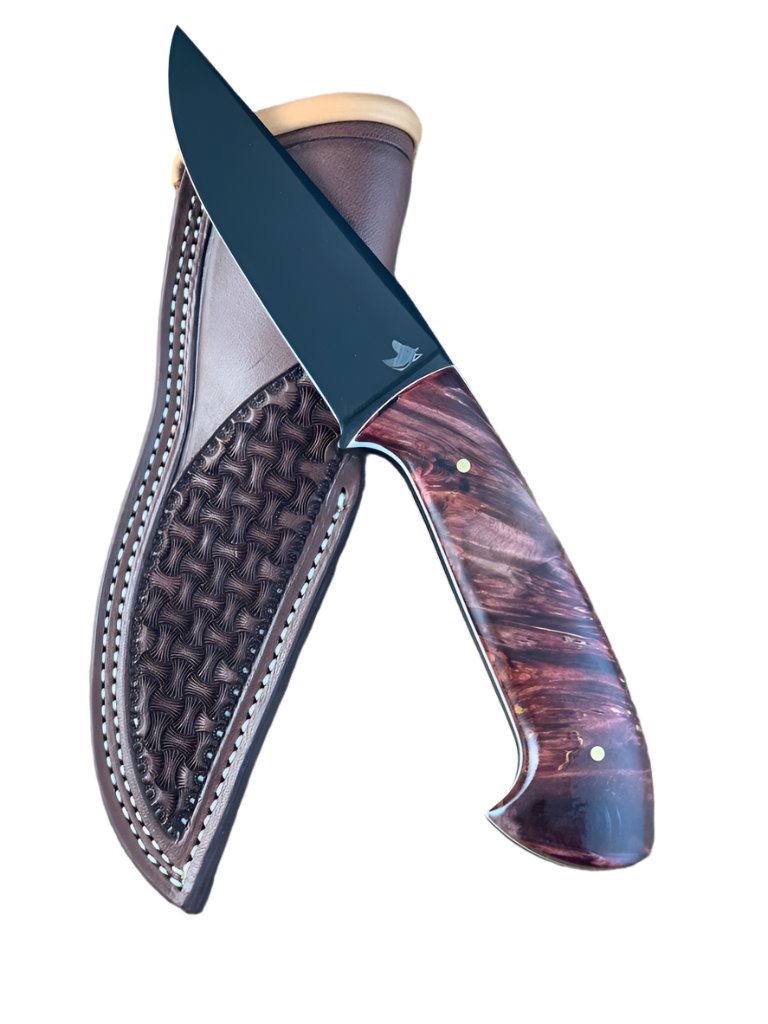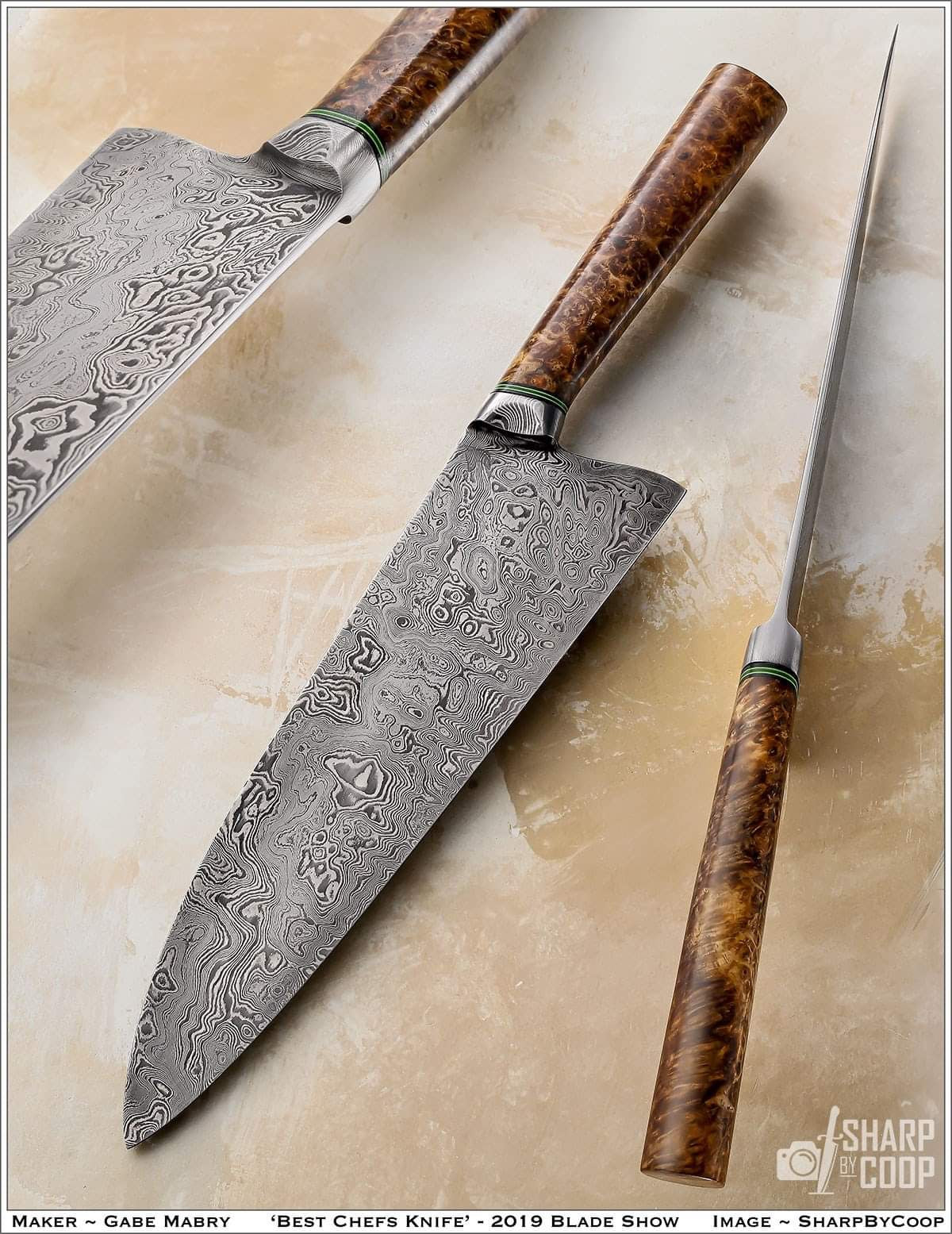
From Marine Corps to Chef to Champion Bladesmith
After serving in the U.S. Marines and cooking on professional lines, Gabe Mabry fired up a backyard forge and never looked back. Today he hand-forges every Doberman Forge blade in Albemarle, NC—blending military grit, chef-level precision, and heirloom craftsmanship into knives that perform for life.
Knife Care & Maintenance
How to Care for Handcrafted Carbon Steel Knives
Every Doberman Forge knife is built for performance, longevity, and beauty. With a little care, your blade can last a lifetime. Follow these guidelines to preserve both function and finish.
🔪 General Use & Cleaning
- Always hand wash your knife with warm water and mild soap.
- Dry immediately with a clean towel — never leave your knife wet or allow it to air dry.
- Never put your knife in the dishwasher — the heat, water, and detergent can cause the handle to shrink, swell, and crack. It also dulls the blade and promotes rust.
- Avoid cutting on glass, marble, or ceramic surfaces. Use only wood, bamboo, or plastic cutting boards.
🌲 Handle Care
- Our wood handles are sealed but still made from natural materials. Avoid soaking or prolonged exposure to water.
- Apply a light coat of food-safe mineral oil or wax every few months to keep the handle protected and hydrated.
- Never leave your knife submerged or sitting in water.
⚙️ Blade Maintenance
- Hone regularly with a ceramic rod or leather strop to maintain your edge between sharpenings.
- Carbon steel develops a natural patina over time — this is expected and helps protect the blade.
- To prevent rust: always dry thoroughly and apply a drop of oil after cleaning.
- Store in a dry place — a magnetic strip, knife block, or blade guard is ideal.
❌ What to Avoid
- Dishwasher use — destroys wood handles, dulls the blade, and causes corrosion.
- Cutting frozen foods, bones (unless specified), or hard shells.
- Using your knife as a screwdriver, pry bar, or tool.
- Leaving your knife wet, dirty, or in a damp environment.
- Avoid long-term storage in leather sheaths — leather can trap atmospheric moisture, which promotes rust and corrosion over time. For extended storage, use a dry, breathable material or blade guard instead.
🪨 How to Sharpen & Hone Your Knife
We recommend whetstone sharpening for optimal results. Here's a basic guide:
- Soak the whetstone (if it's a water stone) for 10–15 minutes.
- Start with medium grit (1000–3000) to remove dullness.
- Maintain a consistent 15°–20° angle and use slow, even strokes along the stone.
- Sharpen both sides evenly, then finish with fine grit (6000–8000) to polish the edge.
- Strop on leather to refine the edge and remove burrs.
🔁 Regular Honing
Use a ceramic honing rod after every few uses:
- Light strokes at a 15°–20° angle help realign the edge.
- When honing no longer restores sharpness, it’s time to resharpen.
- Most home cooks only need full sharpening every 1–2 years, depending on use.
Avoid pull-through sharpeners, which can damage the edge and reduce performance.
💬 Questions?
If you're ever unsure about proper care or want help with maintenance, reach out to us at Sales@DobermanForge.com. We’re here to keep your blade sharp and your experience top-notch.
🛠️ Proper care ensures a lifetime of performance.
Your Doberman Forge knife is an heirloom tool — treat it well and it will serve you for generations.
Collections
-

Razor-thin carbon-steel chef blades
Upgrade your prep with USA-made chef knives, nakiris, and bunkas forged by...
-

Belt knives forged for camp & carry
EDC / Field Knives — Hand-Forged in North Carolina Rugged EveryDay-Carry blades...
-

Single-edition collector pieces.
Every knife on this page exists only once. No production run, no...















